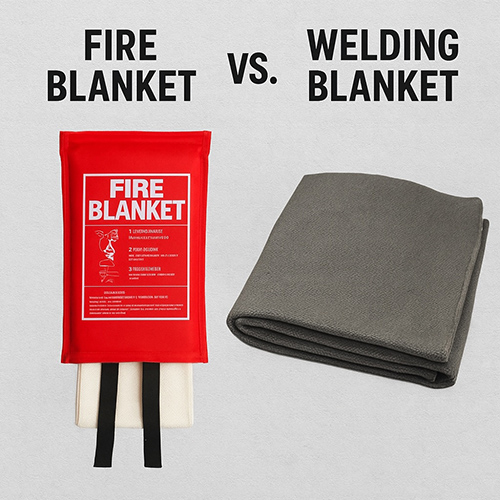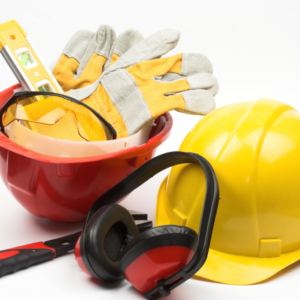When it comes to fire safety and industrial protection, both fire blankets and welding blankets are widely used. Because they look similar, many people confuse the two. In reality, they serve different purposes, use different materials, and apply to different scenarios. At the same time, they share some similarities.
This article explains the differences and common features of fire blankets and welding blankets, helping you choose the right one for your needs.
🔥 Fire Blanket: A First-Response Tool for Small Fires
-
Main Use: Quickly extinguishing small fires such as kitchen grease fires or minor electrical fires.
-
How It Works: Covers the fire or a person to cut off the oxygen supply and smother the flames.
-
Typical Materials: Lightweight fiberglass cloth or ceramic fiber.
-
Applications: Homes, laboratories, offices, and public areas.
🛡️ Welding Blanket: A Safety Shield for Industrial Work
-
Main Use: Protects against sparks, molten metal, and hot debris during welding, cutting, and grinding.
-
How It Works: Uses heat-resistant materials to block sparks and spatter, protecting nearby equipment, flooring, and flammable items.
-
Typical Materials: Silicone-coated fiberglass cloth, ceramic fiber, asbestos replacement fabrics.
-
Applications: Factories, shipyards, steel construction, automotive repair, and industrial workshops.
🔍 Fire Blanket vs. Welding Blanket: Comparison Table
| Feature | Fire Blanket | Welding Blanket |
|---|---|---|
| Main Purpose | Extinguish small fires, cover escape | Protect against welding sparks and spatter |
| How It Works | Covers fire to cut off oxygen | Blocks sparks, molten metal, and hot debris |
| Materials | Fiberglass, ceramic fiber | Silicone-coated fiberglass, ceramic fiber, asbestos alternatives |
| Temperature Resistance | ~500℃–600℃ | 500℃–1200℃ (depending on material) |
| Characteristics | Lightweight, flexible, easy to use | Heavy-duty, high heat resistance, durable |
| Typical Use | Home, office, lab, public safety | Industrial welding, cutting, shipbuilding |
✅ What Do They Have in Common?
Even though fire blankets and welding blankets are designed for different purposes, they also share common features:
-
Heat Resistance – Both are made from fire-resistant fibers.
-
Flexible and Foldable – Easy to store and quick to deploy when needed.
-
Safety Protection – Both reduce fire risks and help protect people and property.
-
Complementary Use – In many industrial sites, both are available: fire blankets for emergencies, welding blankets for ongoing protection.
📌 How to Choose the Right Blanket?
-
For home, office, or lab fire emergencies → choose a fire blanket.
-
For welding, cutting, or heavy industrial work → choose a welding blanket.
-
For factories and workshops → use both for complete safety coverage.
Conclusion
While fire blankets and welding blankets may look similar, their functions are very different. Fire blankets focus on emergency fire suppression, while welding blankets focus on industrial fire protection.
Both are essential parts of a PPE (Personal Protective Equipment) strategy, helping reduce fire risks and keeping people safe in different environments. Choosing the right blanket ensures better protection for your team and your workplace.


